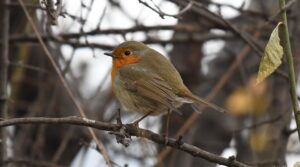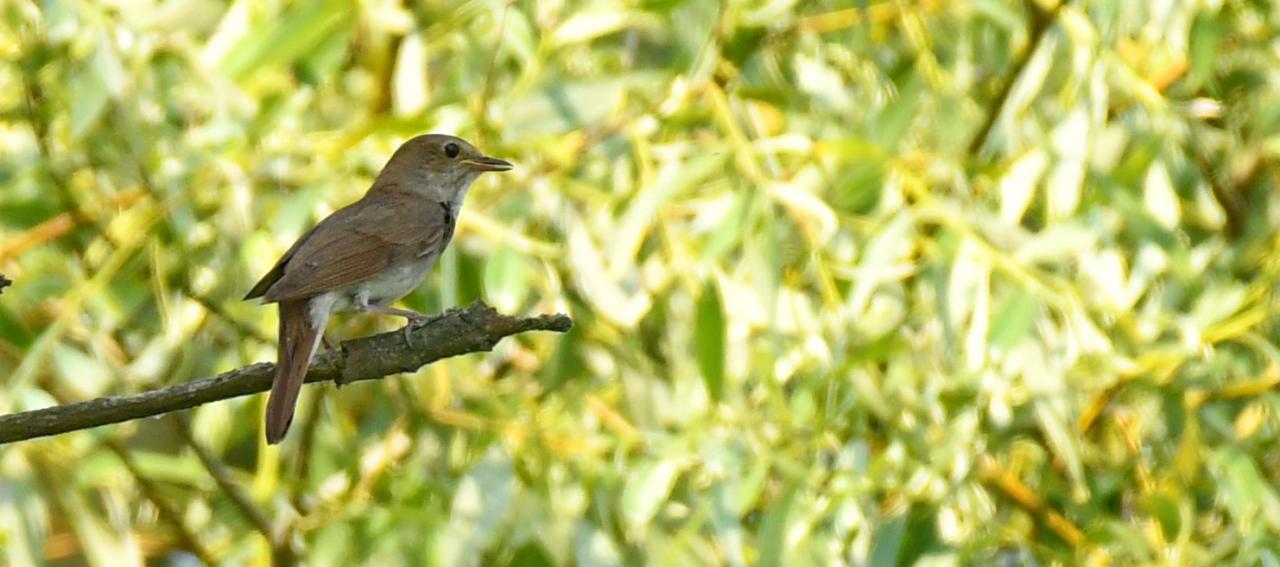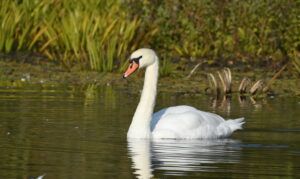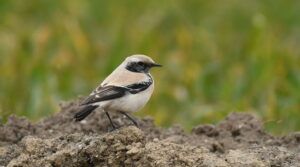The Common Chaffinch (Fringilla coelebs), also called by a wide variety of other names, is a small passerine bird in the finch family Fringillidae.
The Common Chaffinch’s large double white wing bars, white tail edges and greenish rump easily identify this 14–16 cm long species. The breeding male is unmistakable, with his reddish underparts and a blue-grey cap. The female is drabber and greener, but still obvious.
The name chaffinch comes from Old English ceaffinc, literally “chaff finch”, and is the source of the nickname chaffy or chaffie.The bird is so named for its tendency to peck the grain left out in farmyards, a habit which has also garnered it the names wheatbird and wheatsel-bird or wheatsel bird (from “wheatsel”, a rare word meaning wheat drilling), the latter used primarily of male chaffinches (or “cock-chaffinches”). The names scobby, cobby, scoppy, and scop refer to this pecking (“scop” is a Cumbrian word meaning to hit).

The Common Chaffinch’s appearance has given rise to the names whitewing, white finch, copper finch, flecky flocker, pied finch, and robinet (“little robin redbreast”). The name shellapple or shillapple (also spelled sheldapple, sheldafle, or archaically sheldaple) is from “sheld”, a rare word meaning variegated, and “dapple”. This name also appears in the metathetic forms apple-sheeler, its corruption upper shealer, and apple bird. The dialectal names shelly, skelly, sheely, shiltie, shilfer, shilfa, sheelfa, and shulfie are derived from these.
Spink and the less common names pink, pinkie, and pinkety are of the same Proto-Indo-European origin as finch (confer Greek spiza, chaffinch, and French pinson, finch), and are possibly imitative of the bird’s song. This unique call has inspired the names twink, tweet, weet-weet, chink chink, chink chaffey, and pink twink. Popular belief holds that the chaffinch’s song foretells rain, leading to the name wetbird.
The Common Chaffinch is also known by the names beech finch, horse finch (and the variation hoose finch), buck finch, roberd, boldie, and the reduplicative shellapple shiltie. English naturalist Charles Swainson recorded 36 names for the Common Chaffinch in his Provincial Names and Folk Lore of British Birds (1885), including brichtie, brisk finch, briskie, bullspink, bully, charbob, daffinch, maze finch, pea finch, pine finch, and snabby.
This bird is widespread and very familiar throughout Europe. It is the most common finch in western Europe, and the second most common bird in the British Isles. Its range extends into western Asia, northwestern Africa, and Macaronesia, where it has many distinctive island forms. In the Canary Islands of Tenerife and Gran Canaria, the Common Chaffinch has colonised twice, giving rise to the endemic species known as the Blue Chaffinch and a distinctive subspecies. In each of the Azores, in Madeira, and in the rest of the Canaries there is a single species on each island.
It was introduced from Britain into a number of its overseas territories in the 18th and 19th centuries. In New Zealand it is a common species. In South Africa a very small breeding colony in the suburbs of Constantia, Hout Bay and Camps Bay near Cape Town is the only remnant of one such introduction.
It uses a range of habitats, but open woodland is favoured, although it is common in gardens and on farmland.
Many subspecies of the Common Chaffinch have been described, though not all are always concurrently accepted.They include:
Subspecies occurring in continental Eurasia, North Africa and on Mediterranean islands:
- F. c. africana J. Levaillant, 1850 – north-west Africa, from Morocco to western Tunisia
- F. c. alexandrovi Zarudny, 1916 – southern Caspian region, from the Talysh to the Alborz Ranges
- F. c. balearica Von Jordans, 1923 – Iberian Peninsula and the Balearic Islands
- F. c. caucasica Serebrovski, 1925 – Caucasus
- F. c. coelebs Linnaeus, 1758 – Eurasia, from western Europe and Asia Minor to Siberia
- F. c. gengleri O. Kleinschmidt, 1909 – British Isles
- F. c. sarda Rapine, 1925 – Sardinia
- F. c. schiebeli Erwin Stresemann, 1925 – Crete
- F. c. solomkoi Menzbier & Sushkin, 1913 – Crimean Peninsula
- F. c. spodiogenys Bonaparte, 1841 – eastern Tunisia
- F. c. syriaca J. M. Harrison, 1945 – Cyprus and the Levant
- F. c. transcaspia Zarudny, 1916 – Turkmenian – Khorasan ranges (from the Kopet-Dag in the north to the Khaidari Mountains in the south)
- F. c. tyrrhenica Schiebel, 1910 – Corsica
Subspecies of the Macaronesian radiation:
- F. c. canariensis Vieillot, 1817 – central Canary Islands
- F. c. maderensis Sharpe, 1888 (Madeiran Chaffinch) – Madeira
- F. c. moreletti Pucheran, 1859 – Azores
- F. c. ombriosa Hartert, 1913 – El Hierro, Canary Islands
- F. c. palmae Tristram, 1889 (La Palma Chaffinch) – western Canary Islands
- This bird is not migratory in the milder parts of its range, but vacates the colder regions in winter. The coelebs part of its name means “bachelor”. This species was named by Linnaeus; in his home country of Sweden, where the females depart in winter, but the males often remain. This species forms loose flocks outside the breeding season, sometimes mixed with Bramblings. This bird occasionally strays to eastern North America, although some sightings may be escapees.It builds its nest in a tree fork, and decorates the exterior with moss or lichen to make it less conspicuous. It lays about six eggs, which are greenish-blue with purple speckling.
The main food of the Common Chaffinch is seeds, but unlike most finches, the young are fed extensively on insects, and adults also eat insects in the breeding season.
The powerful song is very well known, and its fink or vink sounding call gives the finch family its English name. Males typically sing two or three different song types, and there are regional dialects too.
The acquisition by the young chaffinch of its song was the subject of an influential study by British ethologist William Thorpe. Thorpe determined that if the chaffinch is not exposed to the adult male’s song during a certain critical period after hatching, it will never properly learn the song.
- He also found that in adult chaffinches, castration eliminates song, but injection of testosterone induces such birds to sing even in November, when they are normally silent.
photo: Mihai BACIU







